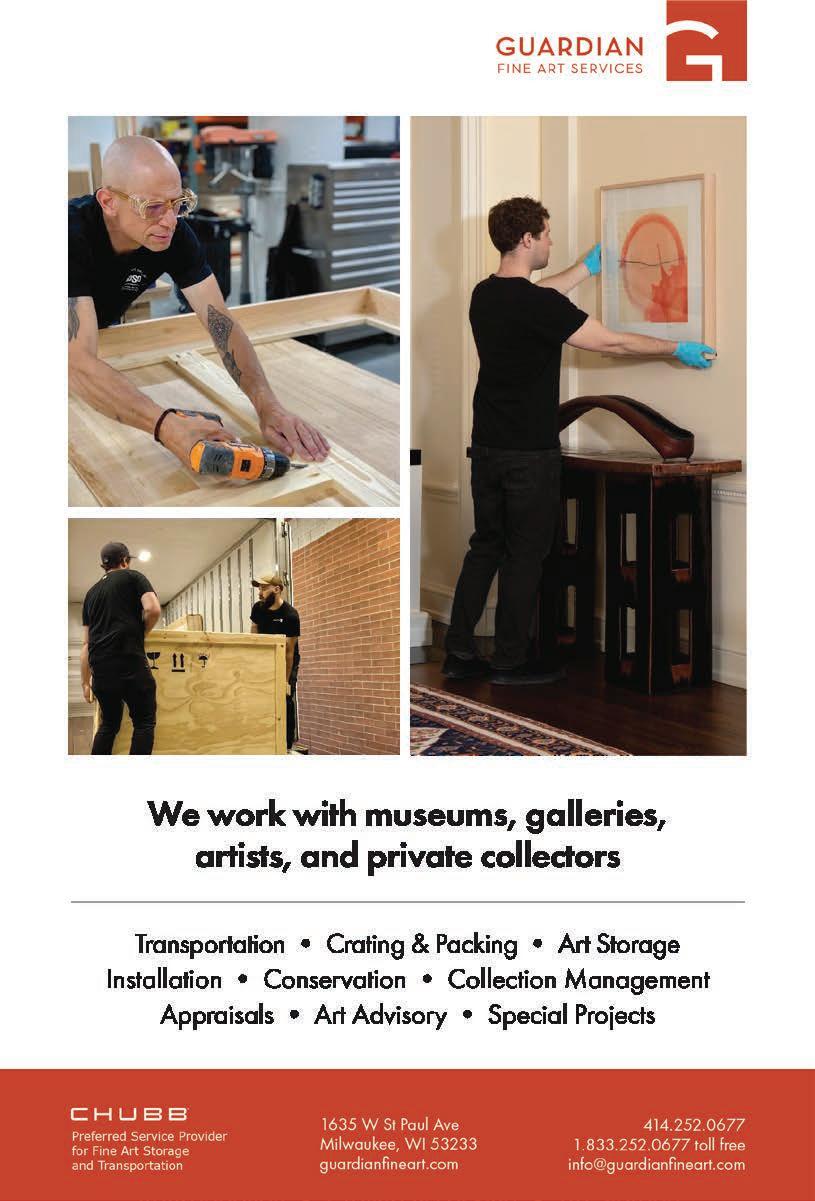






PUBLISHED BI-ANNUALLY : SUMMER & WINTER
PUBLISHER’S NOTE
This year we celebrate our 12th anniversary.
I am still amazed at how Artdose continues to grow and evolve into a go-to publication for anyone interested in Contemporary Art and our regional art landscape. It has been a beautiful experience to navigate organically through this twelve-year journey and embrace ‘change’ as our compass. Since the beginning, we have been driven by our curiosity to create something special to share with you.
A change in our leadership is welcoming Rachel Hausmann Schall as our first co-editor. If the name sounds familiar, it is because she has been a contributing writer for the past five years, or it could be from being in various exhibitions throughout Wisconsin. You will read more about her in our first 2025 Summer/Fall collaborative issue.
Let’s connect.
Frank Juárez
Publisher Linktr.ee/frankjuarez
MAILING
Artdose Magazine LLC
P.O. Box 1125
Sheboygan, WI 53082-1125
SUBMISSIONS
Visit artdosemagazine.com for submission guidelines. All inquires should be sent to artdosemagazine@gmail.com.
Frank Juárez
GRAPHIC DESIGNER
Alison Kleiman
CONTRIBUTING WRITERS
April Behnke
Linda Marcus
Annemarie Sawkins
Rachel Hausmann Schall
Jillian Talarczyk
Kaleb Williams

SOCIAL MEDIA
@artdosemagazineweekly
All Rights Reserved © 2025 Artdose Magazine LLC and the individual contributors
APRIL BEHNKE is an award-winning Chicago-based painter and writer whose studio practice centers on the building and breaking of patterns. She received her MFA from the School of the Art Institute of Chicago in 2011 and has exhibited nationally and internationally. Her work is featured in Georgetown University's art collection and was included in the Rockford Art Museum's 2022 Midwestern Biennial. Though born in Boston, Behnke has roots in the Midwest and a passion for exploring the region’s art scene. Her work is represented by Kim Storage Gallery in Milwaukee, WI.
LINDA MARCUS is a multidisciplinary artist living and working in Milwaukee, Wisconsin. Drawing on her long history as a TV News journalist and fashion designer, her work in fiber and sculpture touch on issues of memory, identity, and materiality. Marcus was recently awarded an art residency at the Massachusetts Museum of Contemporary Art and her work has been exhibited at the Museum of Wisconsin Art, the Wisconsin Museum of Quilts and Fiber arts as well as the Charles Allis Museum and numerous galleries across the country and art publications. Currently, Marcus is the creative director and co-curator for the Saint Kate Arts hotel in Milwaukee.
RACHEL HAUSMANN SCHALL (she/her) is a born and raised midwestern artist, writer, and educator living and working in central Wisconsin. She received her BFA from the Milwaukee Institute of Art & Design (MIAD) in 2015 and has exhibited nationally at a variety of museums, galleries, and artist-run spaces. Rachel has contributed writing to several arts publications and is co-organizer of the Grilled Cheese Grant, an artist-run project that raises funds for emerging artists in Wisconsin. Rachel Hausmann Schall also works as the Artist Residency & Adult Program Manager at the Leigh Yawkey Woodson Art Museum in Wausau, Wisconsin.
ANNEMARIE SAWKINS, PHD, is a Milwaukee-based independent curator, art historian, and co-author of A Creative Place: The History of Wisconsin Art (2021). She has curated projects ranging from Afghan war rugs and Art Nouveau to the history of burlesque. Her most recent exhibitions include Profound Prints: Art by Exceptional Women at the Hilliard Art Museum, and In the Park with Olmsted (2022) at the Villa Terrace. For the Warehouse Art Museum, she curated Rediscovering Ruth Grotenrath (2023), Art Japan (2021), and On the Nature of Wisconsin (2020). When not curating, Annemarie advises artists and collectors.
JILLIAN TALARCZYK developed her in-depth art market knowledge living and working in New York City for over two decades. As a published arts writer, curator, lecturer, art educator, and public art advocate, she is deeply passionate about the transformative power of public art as a valuable tool for education. Talarczyk’s curatorial projects speak to the power of public art and community, demonstrating how art can bring awareness to inspire change, increase diversity, and connect communities. Talarczyk’s art expertise and professional dedication make her a sought-after panelist for art projects, exhibitions, corporate speaking engagements, and her projects have been recently featured in the Wisconsin State Journal, BRAVA, WMTV 15, Wisconsin Public Radio, and Madison Magazine.
KALEB WILLIAMS, a Minneapolis native and lifelong writer, uses storytelling to reshape Black spaces, celebrate Black stories, and form Black identity. Whether capturing the natural drama of sports, exploring the hidden narratives in art, or crafting imaginative tales, Kaleb sees storytelling as a way to connect and transform. To him, words are pliable and flowing—threads to stretch, weave, and shape into vivid pictures. An advocate of alliteration, Kaleb views life through real-life moments and a cartoon-y imagination.
Frank Juárez


I joined the Bergstrom-Mahler Museum of Glass Board of Directors in 2021. What drew me to join this board is their passion for the art, education, and curation of glass. Having no experience or understanding of what makes glass unique, innovative, and collectible motivated me to learn about the world of glass. I have seen firsthand how artists interpret this medium through multiple processes such as blowing, kiln casting, fusing, slumping pate-de-Verre, flame-working, hot sculpting, and cold-working, to name a few. It is fascinating how collaborative this studio practice can be to create a work of art. With appreciation, I wanted to honor it with the work of glass artist Helen Lee.
Lee writes of her work, “As an artist, I explore language and diasporic identity through the materiality of glass. I look to this material of flux to help me explore the ways in which language is a moving target—always in motion, changing shape, form, and meaning over time, across cultures, and as mediated through technology. I dwell in these transformational moments.”
“My relationship to language is shaped by my cultural background as a second-generation ChineseAmerican. I revisit the dual experiences that have demarcated my life—between the dead and the living, past and present, Chinese and American, Mandarin and English, sound and silence. I work with glass and design processes, mirroring the thinking that has been shaped by bilingualism. My work materializes the relationship between words and things; it makes
manifest my ambition to understand loss and absence, and how we ask words to hold meaning in the same way glass holds light. I write in glass, which is to say: I write in light; I write in shadow. In doing so, my work affirms the deepest root of all languages— every word in every language begins with breath.”
"...my work affirms the deepest root of all languages—every word in every language begins with breath."
Helen Lee is an artist, designer, and educator. Lee holds an MFA in Glass from RISD and a BSAD in Architecture from MIT. Her work is in the collections of Minnesota Museum of American Art, Corning Museum of Glass, Chrysler Museum Glass Studio, and Toyama City Institute of Glass Art. Recent exhibitions include: Exuviae at Art Lit Lab, Through a Glass Darkly at Delaware Contemporary, and Momentum | Intersection at Toledo Museum of Art. Lee has taught at Rhode Island School of Design, California College of Art, Pilchuck Glass School, Haystack Mountain School of Craft, Ox-Bow School of Art, China Academy of Art, Toyama City Institute of Glass Art and the MIT Glass Lab. Lee is a 2024 United States Artist Fellow. She is currently an Associate Professor and Head of the Glass Lab in the Art Department at the University of Wisconsin-Madison, and proudly serves as the Director of GEEX, the Glass Education Exchange.



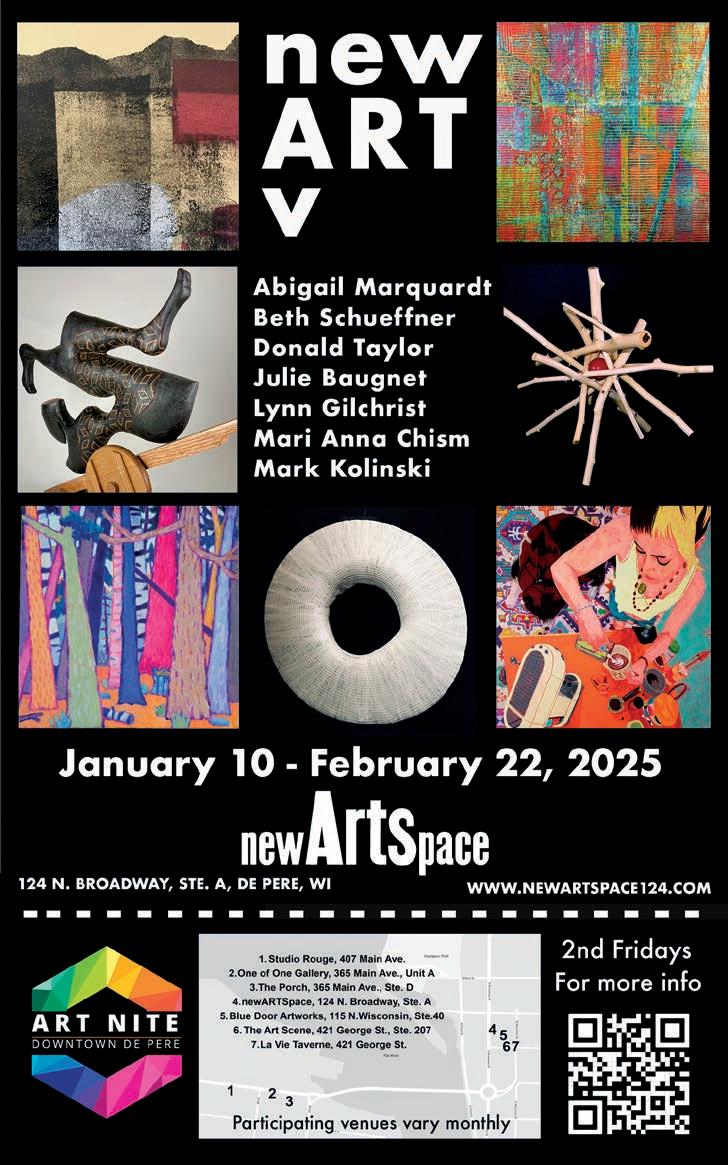
Kaleb Williams


Let’s talk about Essence Enwere—a name that might not be on your radar yet, but absolutely should be. Enwere’s journey into art wasn’t about chasing the limelight. They weren't looking for applause; they’re driven by the need to create, to communicate something essential. Their work tackles the kind of themes that linger—identity, displacement, and the crossroads of culture. Take their series exploring the concept of home: through layered textures, vivid hues, and striking compositions, they visualize what it means to belong—or not belong—to a place. It’s personal, but it’s also universal, tapping into that shared feeling of searching for a place to call home. But here’s the thing—they don't spell it out for you. Their art leaves space for reflection, daring you to sit with your assumptions and dig deeper. It’s that openness, that invitation to explore, that makes their work so engaging.
At their core, Enwere is a storyteller. Their roots in African American culture are more than just an influence—they are a living thread that runs through everything they create. From the bold, vibrant colors that echo traditional textiles to the intricate, symbolic patterns steeped in history, their work pulls you into a world that feels both ancient and modern. But don’t mistake this for nostalgia—their art is about rediscovery and transformation. they're not here to merely replicate what’s been done before; they're reinterpreting it, creating something uniquely theirs. Whether it’s the blending of traditional African motifs with contemporary digital art or the way they capture the emotional resonance of cultural memory, their art fuses generations and cultural worlds, bringing them into dialogue with each other.
Some artists impress you with their skill; Enwere makes you feel the weight of their expression. They don’t confine theirself to one medium either. Whether it’s artist books, design, photography, or mixed media, their work speaks with the same unflinching honesty. Each piece feels like an intimate conversation—about what it means to seek wholeness in a fractured world, about how we navigate cultural spaces, and about how we come to terms with identity. That’s what makes their work connect: it’s raw, it’s human, and it challenges you to look beyond the surface.
But here’s where Enwere truly sets theirself apart: their commitment to community. They aren't just about creating in isolation. They're on the ground, hosting workshops, mentoring young artists, and making art accessible to people often excluded from traditional art spaces. A recent example? Their collaboration with local youth centers, where they led a series of workshops focused on using art as a tool for empowerment and self-expression. Through these initiatives, they are not just elevating their own voice but amplifying those of others, particularly young artists from marginalized communities. For them, representation isn’t a buzzword—it’s a responsibility.
And that’s the essence of their work: creating space. Space for dialogue, for connection, and for change. They understand that art’s true power lies not just in creating something beautiful, but in using it to bring people together. So, if you don’t know them yet, now’s the time to start paying attention. Essence Enwere isn’t just an artist to watch—they're an artist to learn from.
Visit Essenceenwere.com to learn more and connect with them on Instagram at @e_bylon.
April Behnke


It’s the first time I’ve visited Arts of Life, but I know exactly where I am. The nonprofit, which works to empower individuals with intellectual and developmental disabilities through art, is in Chicago’s West Town neighborhood - a hub of contemporary art in the city. Top tier galleries like Corbett vs. Dempsey, Devening Projects, and Gray Chicago are within easy walking distance of their front door.
As I learn in conversation with Nicholas Schutzenhofer, Gallery Manager for their exhibition space Circle Contemporary, Arts of Life’s relocation to the area was one of the catalysts that first brought the city’s thriving art scene to West Town. Established galleries, other arts organizations, artists, and curators throughout the area regularly collaborate with them too, tying Arts of Life deeply into the community.
Across the nonprofit’s three locations: their spacious headquarters in West Town, a site in the Chicago suburb Glenview, and a small location in a historic church in the South Shore neighborhood, they host 60 artists, each of whom receives a monthly stipend, support, exhibition opportunities, access to art supplies, a personal workspace, and art storage. Arts of Life also helps their artists get involved in the wider art scene.
“We're trying to eliminate invisible barriers between the disability community and disabled artists and the rest of the contemporary art world. And we do that through our exhibitions, our events, and inviting contemporary artists and gallerists from across the community to participate in the program and to help raise Arts of Life’s visibility,” explained Schutzenhofer.
These connections strengthen Arts of Life’s mission to provide a creative and supportive environment where participants can express themselves, develop their talents, and establish ties with the community, thereby fostering their personal and professional growth.
“We're trying to eliminate
invisible barriers between the disability community and disabled artists and the rest of the contemporary art world."
“We offer a lot of ways for our folks to learn what other contemporary artists are up to,” said Schutzenhofer. “We have field trips that go around to the galleries in the neighborhood, and we have artists from all over the Unites States (and sometimes internationally) that volunteer to give Zoom lectures about their practice. Allowing our artists access to information like this helps them develop their own work.”
Many of them certainly do establish quite a practice. During my visit to the West Town site, artist Susan Pasowicz offered me a tour of the facility. Pasowicz has shown extensively and has an impressive CV, showing her work at locations including Chicago’s art fair EXPO, New York City’s Outsider Art Fair, and Ruschman, a well-known gallery located in the nearby neighborhood of Irving Park.
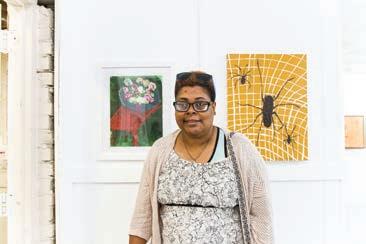
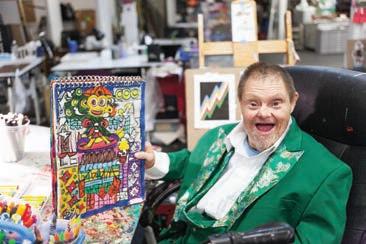
Our first stop was the gallery space, where we checked out ‘In Bloom,’ an exhibition guest curated by local artist Armani Howard. Among the works on display were her own soft, intricate drawings made of looping lines, creating glowing webs luminous with color.
From there, Pasowicz led me to the artists’ working space, an immense room with high ceilings, individual drawing tables, a resource library, storage and art materials, and a gathering space for meals, parties, talks, and other events. The atmosphere was comfortable and convivial.
"These connections strengthen [our] mission to provide a creative and supportive environment where participants can... develop their talents... establish ties with the community, thereby fostering their personal and professional growth."
Several artists stopped by to introduce themselves and show me their work, including Bill Lilly, whose text-filled drawings celebrate his love of heavy metal and rock n’ roll. Lilly has exhibited many times at Arts of Life’s Circle Contemporary Gallery and has work in the ArtBank permanent collection in McCook, Nebraska.
To end my tour, Schutzenhofer led me back to Arts of Life’s new archiving room, where a small team was busy photographing, uploading, and documenting decades of artwork from the nonprofit’s sites. In 2025, Arts of Life will be celebrating their 25th anniversary, and the archive is a key component of that.
“A big part of supporting our artists’ professional development is effectively housing their work and having a record of it,” he said. “So far, we’ve catalogued about 4,000 pieces and we’re just getting started.”
Part of the archive will be shared not just with curators and other arts professionals, but with the wider public. Next year, Arts of Life will publish a book featuring 25 of their artists from the past quarter century. Both the archive and the book will serve to further highlight their artists' achievements.
As they approach this major anniversary, Arts of Life has much to look back upon with pride and forward to with anticipation. If you would like to be a part of their story too, visit https://artsoflife.org/volunteer/ to find out how you can get involved.
Visit artsoflife.org to learn more and connect on Instagram at @the_arts_of_life
A Creative Place: Art from Northeastern Wisconsin from 1940 to Present at the Trout Museum of Art
Annemarie Sawkins
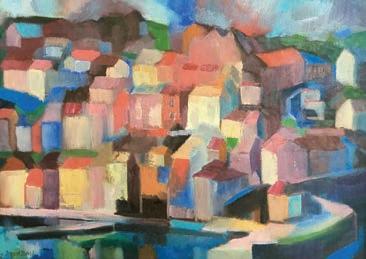
Margaret Dietrich (1912–2000), City on Hill, 1950s, Oil on board. Collection of Ric Hartman, Gallery of Wisconsin Art.
Did you know the Trout Museum of Art in Appleton is moving? Its new home, opening later in 2025, will be just down the street from its current location at 111 East College Avenue. While the Trout is poised to play an even greater role as a major hub of the visual arts across Northeastern, Wisconsin, its upcoming exhibition will be a fitting capstone prior to the move.
Early in 2024, I was approached by the Trout to curate the last exhibition in their present space. Given my recent experience co-authoring A Creative Place: The History of Wisconsin Art, and my interest in complex, historical projects, I proposed a retrospective that would include a historical look at the area and a more detailed timeline of the museum, founded in 1960. The Appleton Gallery of Arts (now Trout) first opened in its own space in 1977, before moving and being rebranded several times.
The exhibition, A Creative Place: Art from Northeastern Wisconsin from 1940 to Present, gathers for the first time the institution’s history and celebrates the whole region. By focusing on northeastern Wisconsin, this exhibition and its catalogue builds on the research I began eight years ago. For this show, the art is not limited by medium. Rather, it covers 85 years and a wide variety of artistic themes and ideas produced using a range of methods, materials, and techniques. As a result, a diversity of styles and studio practices characterize the work assembled.
This critical survey—featuring over 120 works—starts with Jessie Kalmbach Chase (1879–1970), Agnes Florence Wainwright (1905–1990), first full-time art

Suzanne Rose (b. 1964), Night Vision III (Brussels, Wisconsin), 2014, Archival pigment print, 22.25 x 34 in. Courtesy of the artist.
curator at the Neville Public Museum, Green Bay, and Madeline Tripp Tourtelot (1915–2002), filmmaker and philanthropist, who founded the Ephraim Art School in 1943 and Peninsula School of Art in 1965.
A short list of some of the artists includes Door County’s Franne Dickinson, Thomas and Margaret Dietrich, Francis H. Hardy, James J. Ingwersen, Gerhard C.F. Miller, and Charles L. Peterson. The 1950s and 60s is represented by Lester W. Bentley, Able Cohn, Paul Donhauser, Austin Fraser, Joann Kindt, and Clarence Boyce Monegar. A few artists who had long careers include Norbert Kox, Arthur Thrall, Lester Schwartz, and Phil Sealy. Select established artists represented are Dennis Bauer, Michael A. Doerr, Carol Emmons, Michael Meilahn, Christine Style, and Karon Winzenz. The work of photographers Leslie Bellavance, Jerry Dell, J. Shimon & J. Lindemann, John Nance, Suzanne Rose, Lauren Semivan, and Terri Warpinski, joins contemporary painters, Craig Blietz, Marjorie Mau, Lori Jae Ricci, and Rafael Salas, among many others.
Contemporary elements of this exhibition include artist interventions that may become permanent. Finally, for the opening—January 24, 2025—instant film photographer Joy Laczny of Appleton, an “Artist to Watch 2024,” will produce a series of Polaroids to document the occasion. The exhibition runs through May 18, 2025.
Visit troutmuseumart.org to learn more and connect on Instagram at @troutmuseumofart


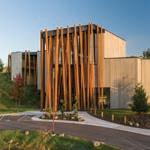
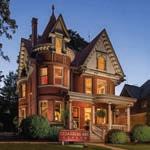

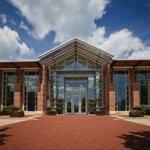


The Art Preserve of the John Michael Kohler Arts Center is the world’s only museum dedicated to the preservation and celebration of artist-built environments—spaces and places that have been significantly transformed by an artist to embody and express aspects of their history, place, or culture. More than 30,000 works by 40 artists are on display, including award-winning, artist-designed washrooms. Admission and parking are always free.
Tue, Wed, Fri: 10 am – 5 pm, Thu: 10 am – 8 pm, Sat and Sun: 10 am – 4 pm 3636 Lower Falls Road Sheboygan, WI 53081; 920.453.0346; jmkac.org
Located in the heart of Cedarburg in a stunning 1898 red brick Victorian home, the Cedarburg Art Museum champions historic and contemporary local arts through its collection, exhibitions, events, and museum shop. The museum is free and open to the public with rotating exhibitions of local, Wisconsin art and works from the permanent collection.
Thursday - Saturday, 10 am - 4 pm; Sunday, 12 - 4 pm W63N675 Washington Avenue, Cedarburg, WI 53012 262.377.6123 cedarburgartmuseum.org
The James Watrous Gallery is dedicated to amplifying Wisconsin artists. Located on the third floor of Overture Center for the Arts in downtown Madison, the Watrous focuses on solo and curated exhibitions that feature contemporary Wisconsin artists. As a program of the Wisconsin Academy of Sciences, Arts & Letters, the gallery aims to draw connections between art and other disciplines.
Thursday-Friday 12 - 6 pm, Saturday 11 am - 5 pm, Sunday 12 - 5 pm; 201 State St, Madison, WI 54703; 608.733.6633 x25; wisconsinacademy.org/gallery
The John Michael Kohler Arts Center (JMKAC) is a nationally acclaimed visual and performing arts complex located in Sheboygan. Year-round offerings include rotating original exhibitions and thematically aligned live performances, community events, and art-making experiences for all ages and abilities. Experience includes a friendly café, a gift shop, and a hands-on art studio. Admission and parking are always FREE. Tue, Wed, Fri 10 am – 5 pm, Thu 10 am – 8 pm, Sat and Sun: 10 am – 4 pm 608 New York Ave, Sheboygan, WI 53081; 920.458.6144; jmkac.org
Located in the heart of Milwaukee, the Kim Storage Gallery is a vibrant space celebrating the creativity of Wisconsin and beyond. This gallery features a diverse mix of museum-quality artwork, ranging from innovative pieces by emerging local talents to esteemed works by established artists. It's a dynamic hub where art enthusiasts can explore the evolving landscape of contemporary art in an inviting and accessible environment.
Tuesday-Saturday 10 am - 5 pm, Viewings by Appointment; 207 E Buffalo St, Ste 404, Milwaukee, WI 53202; 608.381.6905; kimstoragegallery.com
The Leigh Yawkey Woodson Art Museum, known for its internationally renowned "Birds in Art" exhibition each fall, offers diverse and ever-changing exhibitions year-round, sculpture garden, Art Park, dynamic programs for all ages and life stages, and a commitment to always-free admission that provides barrier-free access to the visual arts
Tues-Fri 9 am - 4 pm, First Thur. of each month 9 am - 7:30 pm, Sat-Sun 12 - 5 pm, Closed Mondays & holidays. 700 North Twelfth Street Wausau, WI 54403; 715-845-7010; www.lywam.org
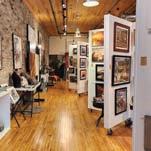

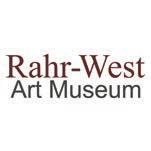



Mercantile Plaza is a premier fine art gallery located in a historic building along the shores of Lake Michigan in Port Washington, WI. Featuring over 70 artists from Southeast Wisconsin, this wide selection of original art includes paintings, textiles, woodwork, metal, pottery, leather and much more! The gallery also offers commissioned projects, commercial placements as well as a custom frame shop.
Sun/Mon 10 am - 3 pm, Thursday 10 am - 4 pm, Fri/Sat 9 am - 5 pm, (Tues/Weds by appointment) 211 N. Franklin Street, Port Washington, WI 53074; 262.235.4071; mplazaonline.com
newARTSpace is a non-commercial arts exhibition, performance & event space enlivening an old storefront in downtown De Pere. This artist-driven organization has a reputation for thoughtfully curated exhibitions featuring local, regional and national artists. newARTSpace is co-founder and co-organizer of ArtNite. DowntownDePere, on 2nd Fridays of each month East and West De Pere unite in celebrating its vibrant creative community with extended hours and special events at participating businesses.
Hours vary weekly, please check website or social media for up-to-date information. 124 N. Broadway, Ste. A, De Pere, WI 54115; 541.991.7119; www.newartspace124.com
The Rahr-West Art Museum is a City of Manitowoc facility that preserves and enhances its collections and historic mansion. The museum's purpose is to engage the dynamic learning opportunities in the visual arts, and enrich life in the area by serving as a cultural resource.
Tuesday - Friday 10:00 am - 4:00 pm, Saturday - Sunday 11:00 am - 4:00 pm 610 N. 8th St. Manitowoc, WI 54220; 920.686.3090; Rahrwestartmuseum.org
Rountree Gallery is an all-volunteer, non-profit art gallery and art hub in the Southwest region of Wisconsin. Rountree Gallery hosts dynamic local and regional art exhibits in a professional gallery space within a historic building on a vibrant Main Street. Follow Rountree Gallery on FB or IG to stay up to date on call for arts and upcoming shows.
Thursdays and Fridays: 4 - 7 pm, Saturdays: 10 am - 2 pm 120 West Main Street, Platteville, WI 53818; rountreegallery.org
The Trout Museum of Art is the Fox Cities’ hub for artistic expression, offering exhibitions, workshops, and events. This winter, as the museum prepares for its exciting move to a new building, it celebrates the final exhibition in its current space, A Creative Place: The History of Wisconsin Art (Jan 24 – May 18), guest curated by Annemarie Sawkins. Don’t miss this milestone! The new museum will open in Fall 2025 in Downtown Appleton!
Tues, Wed: 10 am - 4 pm; Thurs, Fri: 10 am - 7 pm; Sat: 10 am - 5 pm; Sun: 12 pm - 4 pm; Mon: Closed 111 West College Avenue Appleton WI 54911; 920.733.4089; troutmuseumart.org
Our gallery is also our studio, home, classroom, and garden. We focus on fine craft, fine art, and fair trade works. The gallery and gardens are open year round with specific hours and events are listed on our website. Clay is our specialty with a wide range of functional, sculptural, and garden works.
Varies by season. Please check our website; 244 East Rhine Street, Elkhart Lake, WI 53020; 920.876.3192; twofishgallery.net
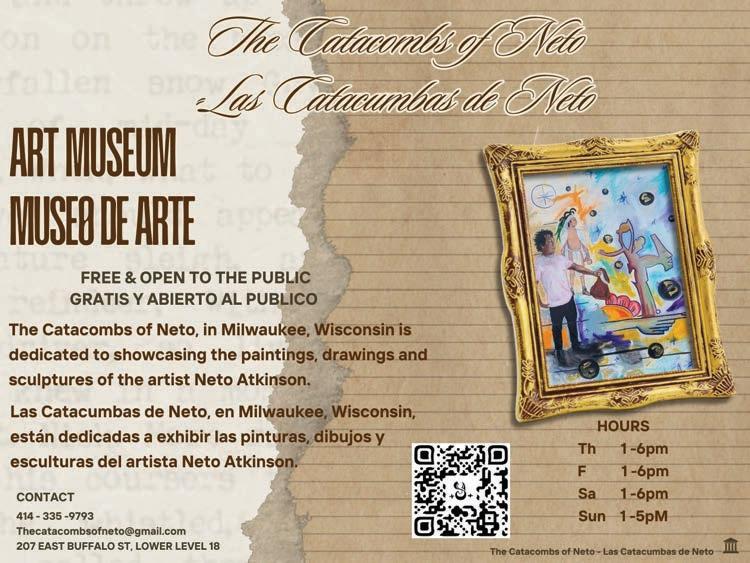

April Behnke


For interdisciplinary artist Kellie Romany, materials are a conduit for exploring complex ideas about identity and human connection. Based in Chicago, Romany's practice spans painting, drawing, ceramics, and bookmaking. In each medium, her work delves into the realm of sensation and experience, extending beyond the mere visual.
Using a color palette of skin tones, she creates abstractions evoking constantly shifting definitions of race and belonging. Manipulation of materials through, as she describes, “abstracted bleeds, clots, rings, cracks, and rippling waveforms,” functions as a metaphor for the manipulation of identity.
“Using abstraction in various mediums allows me to not only digest what has happened and is happening but also leave room for other's perceptions,” she says. “By looking at our collective and personal histories and goals through an abstract or poetic lens there is space for greater understanding, conversation, and connection.”
In her handmade artist books, Romany provides the viewer with an especially intimate, tactile experience. To fully engage with the work, they must touch its cover, turn its pages, and discover what is hidden within.
"Books are such a unique medium," she explains. "They are read, they are held, and the intention of a book historically has always been to transfer an idea or information. Books are made to hold meaning. I use bookmaking to engage the audience with ideas of how information is transferred and what it means to hold something.”
‘Hold Me,’ a book she created during the pandemic, exemplifies this approach. To engage with the piece,
the viewer must open a small box, containing within it a poem instructing them how to handle the piece. As they turn the pages of the book below, they encounter a tiny ceramic vessel easily held in the palm of their hand. It contains within Romany’s characteristically delicate, oozing paint forms in colors that recall the body, both its interior and exterior.
"It’s about vulnerability, which in many ways means allowing yourself to be fully seen," Romany reflects.
As the viewer carefully, gently, and slowly passes through the experience of the piece they feel its delicacy viscerally. “‘Hold Me’ is predicated on the intimacy of touch and transformation. The viewer holds this book, reads the poem, lightly brushes their fingers on and around the paint, considers the subtle ridges of my imprinted fingertips, and is reminded that we are connected.”
Romany’s approach to bookmaking is highly conceptual, with every decision, from the number of books she makes to the materials she uses, dictated by her themes of choice.
For ‘Hold Me,’ she made five books, echoing the five fingers of the hand. Similarly, in her book project ‘58 Weeks of Longing,’ she created one watercolor for each week she was unvaccinated during the pandemic, a time when she longed for physical touch from her community.
Whether through paint, clay, or paper, Romany’s work is about finding new ways to connect with the viewer, to invite them into a shared space of reflection and understanding. To learn more about the artist, visit kellieromany.com and connect on Instagram at @kellieromany.
Linda Marcus

"Drawing is a way of seeing into your own nature."
- Richard Serra
Derrick Buisch uses vibrating colors, lines, and shapes to create a kind of energy, anxiousness, and ambiguity that leaves the viewer wanting more. It's a peak into Buisch's nature as an artist. The University of Wisconsin-Madison painting professor's work is deeply steeped in popular culture, graphic design, and the never-ending dialect between the knowable and unknowable.
Buisch is hesitant to call himself an abstract painter. He says he's been highly influenced by such greats as Gerhardt Richter, Forrest Best, and Mike Kelley. What makes Buisch's work engaging is his use of the pedestrian, the common, or every day. It's visible in his ongoing use of the smiley face. It's been an interest for him for the last 30 years. He says he's always trying to reinvent it. "I'm interested in trying to define language or vocabulary or iconography that would resonate, kind of beyond itself," says Buisch. “A smiley face is something you can make in a matter of seconds. Once you have seen it, you understand what it is. It's like the plus symbol or Ampersand or the @ symbol. Once you understand it it's almost like a reflex." Buisch also paints snakes or flying saucers for the same reason. Both represent something most of us have seen or know about, but they are also something which represents mystery and uncertainty. " It's evidence of mystery, you don't know what it is, there's a lot of hypotheses about what it could be. There are fuzzy pictures of them. They are deeply connecting but you don't fully understand."
A recent Zoom tour of Buisch's studio is a feast for the eyes, a sensorial experience. Buisch says, " I want my paintings to be the most beautiful, delicious thing you put in your mouth, and it would be like this rush of sugar completely high caloric, best cake you have ever tasted, like a flavor rush. I want my paintings to have that immediate flavor rush. it's a trigger pleasure. The bold, eye-catching colors and forms are things we think we know, but we quickly realize it's something quite different we're encountering, something we don't fully understand but are intrigued by.
"I'm interested in trying to define language or vocabulary or iconography that would resonate, kind of beyond itself..."
Buisch democratizes imagination and gives the viewer permission to play. He purposely hangs his paintings and drawings together to create a kind of grouping, ecosystem, and an energy field. He says, "Hopefully, part of the work is that I want it to just jump off the wall. I refer to it as headache colors, two complimentary colors are vibrating against each other." It's those kinds of ideas that drive a kind of alchemical way of working for Buisch, “I like a painting that can be irreverent and formal and sassy and entertaining. I'm interested in what's deeply familiar but still mysterious and a sensation that gets me closer to what I want to do. It's a style of making which engages and slows the viewer down", according to Buisch.

UFO Grid – ongoing series.
Growing up in the late '70s and ‘80s in Silver Spring, Maryland, Buisch was highly influenced by all around him, including his comic book collection, record collection, and all the graphic design around him. He says he's always " unlocking "things" he's absorbed throughout his life, and it comes out in his drawings and paintings in notebooks and repurposed ledgers. Each one is full of watercolor, acrylic, and pen drawings of all different gestures and shapes. Each collection is a study or log. Buisch says it’s distilled chaos." A lot of this I'm thinking about and pulling it in and then at some point there's a place you pull it out".
Luckily, there’s a lot for viewers to enjoy. Buisch's way of thinking and his nature are evident in his gestures, shapes, and doodles. He organizes it all and presents it in such a way it changes the viewer for the better.
Visit 202c.com to learn more and connect on Instagram at @derrick_buisch_studio.

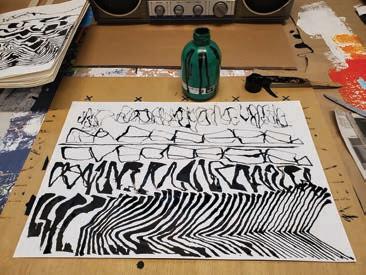
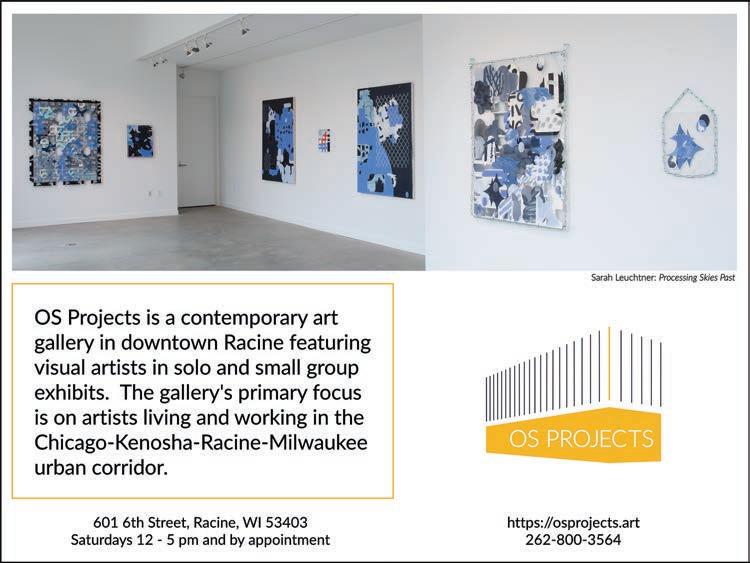


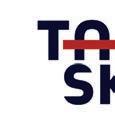
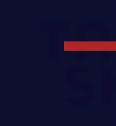



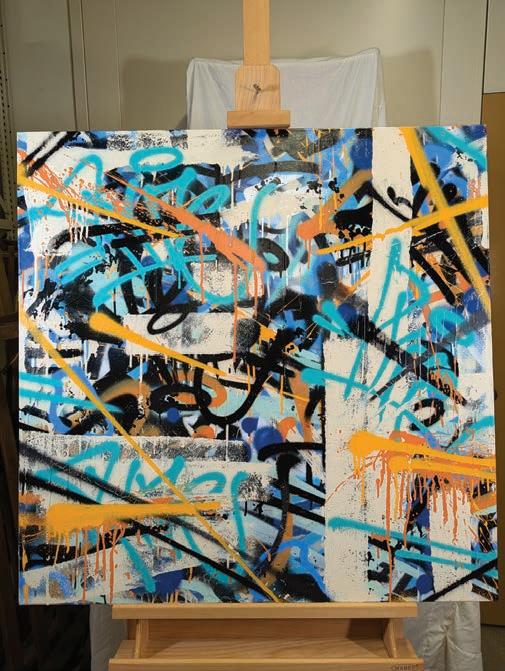
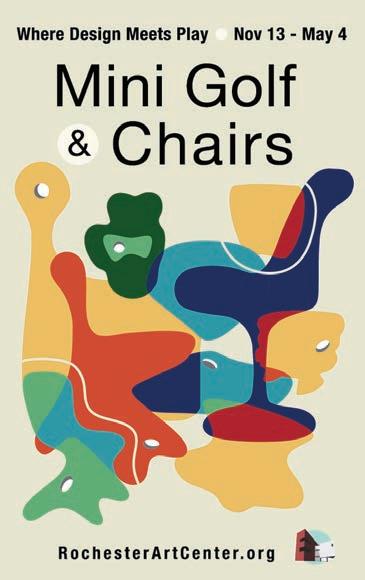
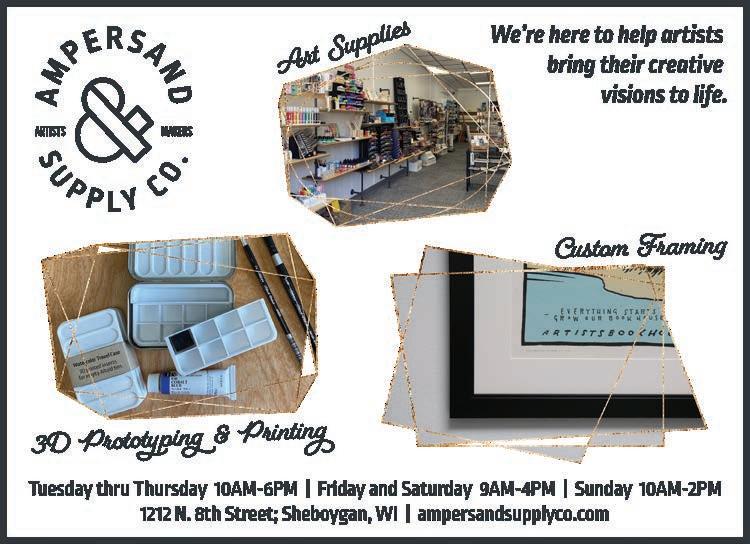

Visit pink-noise.org to learn more and connect on Instagram at @hotpinknoise
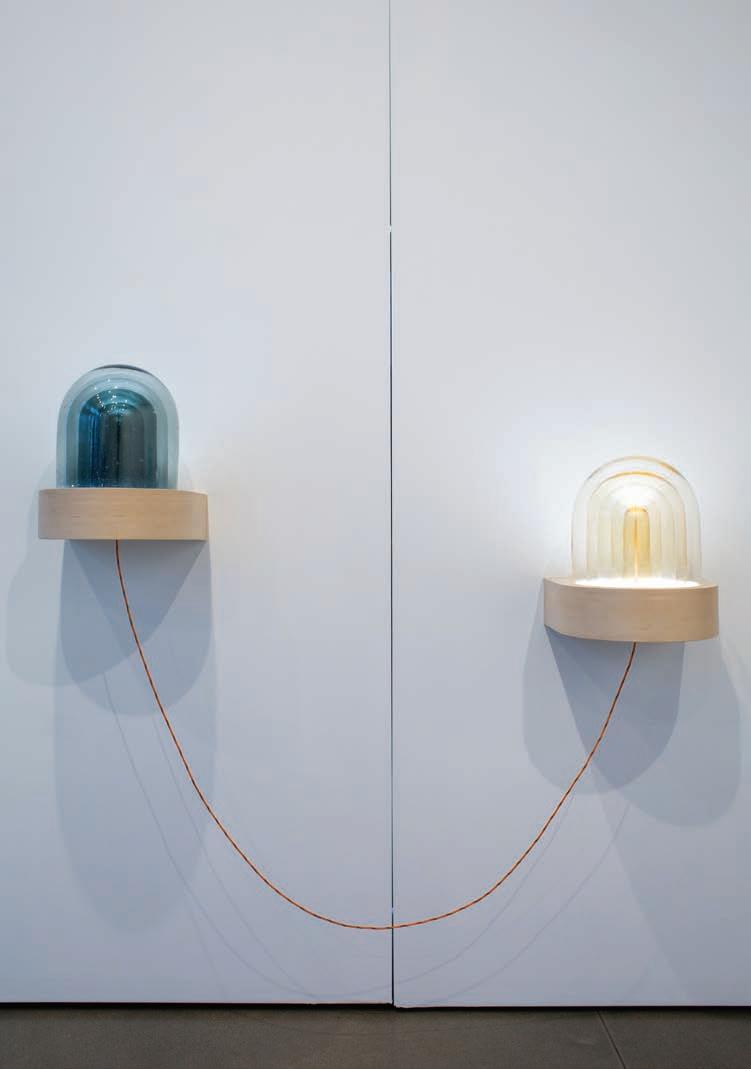


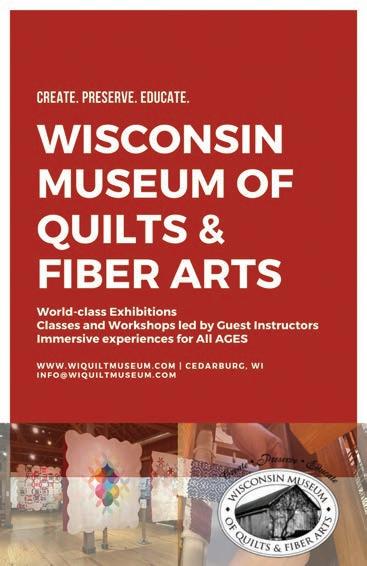
Jillian Talarczyk
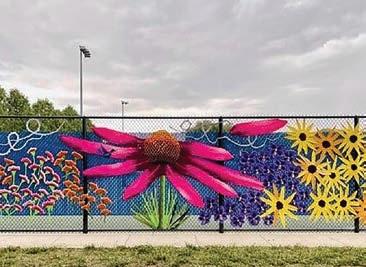
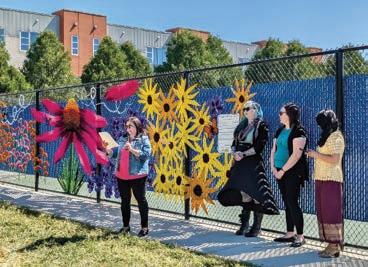
The latest installation unveiled by Madison Public Art Project (MPAP) is a fiber art mural entitled the Wildflowers of Wisconsin, which brought together over 90+ participants in its creation over the past year. Kiersten Darling is the lead fiber artist who created this mural, assisted by teaching crochet artists Sapphira Afifi and Karen Jahns. Spanning an impressive 30 feet long, and 10 feet high, the mural, comprised of oversized crocheted flora native to the state of Wisconsin, will be on exhibition in McKee Farms Park in Fitchburg until August 2025.
Darling is a neuro-divergent female artist based in Milwaukee. She describes her condition with the term “spoonie” which describes someone who lives with chronic pain and utilizes this spoon theory to describe their energy levels. Darling was excited to be able to work on this project while also prioritizing her health. Keeping inclusivity as the focus, she created wonderful flower patterns using flora species that include the Black-eyed Susan, Butterfly milkweed, Swamp milkweed and the State Flower of Wisconsin, the Blue Violet. She also created the skillfully impressive Coneflower centerpiece freehand using her artistic language of color and shading in an oversized expression. Her special pollinators can be spotted tucked into the mural for which she used shimmer threads offering an additional layer of surprise and delight throughout this bright installation. Her finishing service, Weave In My Ends, offers a premium knit and online crochet finishing service. Sapphira Afifi, an interdisciplinary Madisonbased artist, lead our community workshops throughout Madison. She was assisted by Jahns, a self-taught crochet artist who also creates hand crafted amigurumi pieces, watercolor prints, and teaches private crochet lessons.
Crochet, as an art form, started in the 1820’s, and this mural demonstrates how important fiber arts still are today. As the creative director of MPAP, I am thrilled at how this textile project brought many participants of all ages and backgrounds together learning the various flower crochet patterns over the past year while attending our mural workshops. The mural is not just beautiful, but it raises awareness about climate change and encourages greater stewardship of the land, encouraging individuals to rethink their own consumption habits. The work inspires personal action to combat climate change including reducing, reusing, recycling, upcycling, foraging, composting, and promoting pollinator friendly gardening spaces.
For more information on this project please visit: MadisonPublicArtProject.org and on Instagram at @madisonpublicartproject. Limited edition jigsaw puzzle gifts of this mural are also available with a non-profit donation. Darling’s work is at @endswoven and www.weaveinmyends.com, and Jahns is at craftysideofkaren.com.
Viewing the mural is free and open to all. Visit and experience this beautiful colorful and tactile work during the exhibition. Thank you to all the Community Crochet Day participants who joined our art initiative, to the City of Fitchburg, and to our generous Sponsors. For mural purchase inquiries please contact: info@ madisonpublicartproject.org or call 608.800.7728. Jillian is the Founder & Creative Director of the Madison Public Art Project.
Linda Marcus
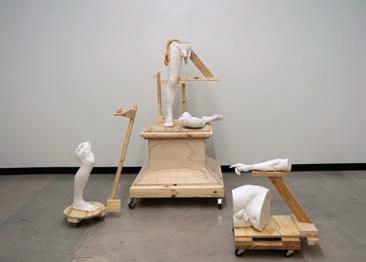
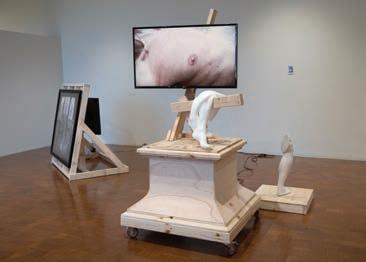
Left: Constructions (series grouping: Athlete, Warrior, Commander), 2023, Lifecast high density plaster, silicone hand, dentures, plywood, lumber, caster wheels, Grouping is 71 in. tall x 90 in. wide x 88 in. deep. Right: Staring at the Son installation view at the University of Kentucky Art Museum (Lexington), 2024, 4k looping video, silicone life cast, plaster life-cast, lumber.
Empathy is what you will likely feel when you encounter the art of Christina A. West. The UWMadison assistant professor’s sculpture practice centers on the body, defining an "alternate gaze" - a way of looking at the body that isn't gender dependent. West says she is presenting the body in a fragmented form to further the idea: "I'm interested in trying to represent those bodies that make us more open to what we can expect from those bodies. And even though those bodies look different, they may be experiencing similar things emotionally. So, fragmentation is a way to present an incomplete image. It isn't the whole picture. The idea is there's more here that we can't see instead of giving an illusion of wholeness."
West's practice challenges the patriarchal gaze, one she says limits our understanding of what a body can do. "The problem is when it becomes a pervasive representation, and we start to overlay that representation over most women, and then it flattens them and what they can do, and that's a problem. There's a similar issue when it happens with a male body as well. It flattens them. They are powerful, leaders and in control so we don't see those moments where they are vulnerable and awkward. I'm interested in reducing the distance between how we see male and female, and I think we are much closer related than what culture has made it seem."
Photography, video, and sculpture deepen West's understanding of the dynamics of looking at a body and how a body moves. West began by focusing on the male body, an area often considered taboo for a
woman. "The decision to focus my studio practice on the male gaze and challenging it became partially from thinking about the male gaze and challenging those perceived roles. Usually, the woman would be the one having her image created. She's more passive and the object of the gaze. Now, I'm behind the camera, and now I'm in the active role, directing the models and recording what I want to see. For me, that's a political act. You don't really see a lot of male bodies from a non-male perspective. It's usually men by men and it was an interesting thing to me because I wanted to see the male body and I was wondering why other women weren’t interested in this. It’s what I want to see. I don't have to wait for someone else to do it. I'm just going to do it."
"What would it even look like if I removed the combination of male and female gender and that dynamic? It's just a woman looking at a male body."
The journey began with an idea. West admits she didn't have it all figured out in the form a thesis, so she started with just one question,"What would it even look like if I removed the combination of male and female gender and that dynamic? It's just a woman looking at a male body." That inquiry led to a deeper complexity. West says, " It's interesting to me when it's a complex image, and it isn't entirely one thing or
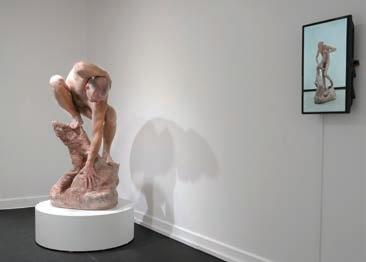

another. It's not entirely about their strength or not entirely about their weakness, either. So, I’m trying to position myself within that, and gradually, the conceptual aspect clarified more for me."
West received her BFA from Siena Heights University in Michigan and her MFA from Alfred University in New York. Her work has been extensively exhibited throughout the United States. West is currently an Associate Professor at the University of WisconsinMadison. Her training in sculpture has allowed her to push back against realism with abstraction by using all different body types, creating work that teeters aesthetically between beautiful and grotesque. It's a way of reminding the viewer of the value of being uncomfortable. "I just feel like whenever there is something uncomfortable, then there's something worth considering, like why is it making you uncomfortable? I think it gets at something deep inside of us that's culturally engrained from our families and ideas of what people think is acceptable. I this prompts reflection in us."
West is also interested in what happens on the interior of a body and how it's displayed on the body’s exterior. "How is the body revealing what is going on inside a person? How are they feeling when the things that aren't visual? How is that revealed through the body knowing the way it is revealed is highly flawed?"
Much of her sculptures are made via direct contact with the material and the models with latex and Hydrocal castings. When West works with clay, she's keenly aware of how her perspective is embedded into the material. "Handling material is a way that has
shown me that my hands are more analogous to my gaze. It's like I'm leaving my imprint of my presence on the work instead of the object just magically appearing."
"I just feel like whenever there is something uncomfortable, then there's something worth considering, like why is it making you uncomfortable? I think it gets at something deep inside of us..."
All of this is in service to expanding the way West thinks about bodies without the added layer of gender. For West and all viewers, it's "An alternate way of representing bodies that aren't coming from a gender perspective with the inclusivity of empathetic, complex representations that does justice to what the embodied experience is really like rather than being I'm a woman looking at a man, so I'm going to look at him this way. It's not always going to be the same; it depends on the context. it's about creating representations that aren't so limiting."
Visit cwestsculpture.com to learn more and connect on Instagram at @cwestsculpture
The Artdose Artist Directory showcases the art of regional artists. A perfect resource for people looking to start or add to their art collection.
Terri Field
Kristine Hinrichs
Jayne Reid Jackson
Angela Johnson
Helen Klebesadel
Ginny Krueger
Issis Macias
Linda Marcus
Lauren Marie Nitka
Cyndie Rauls
Katherine Steichen Rosing
Judy Tolley
Amy Weh
To make a purchase, please contact the artist directly. Artists receive 100% of their sales. All images courtesy of the artists.
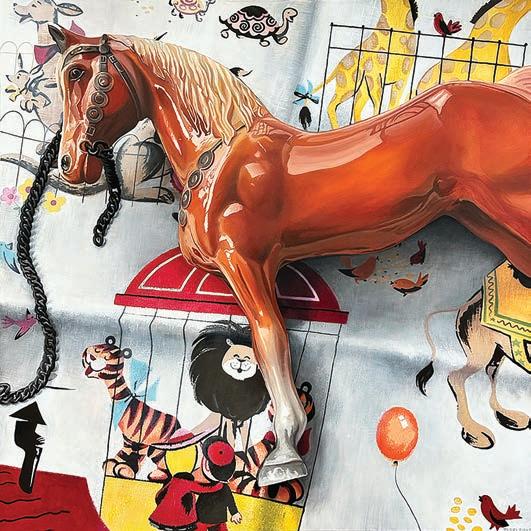
Grandma’s Horse, 2024, Oil on canvas, 36 x 36 in. $2500.
Terri’s Reminiscence series evokes the essence of a simpler time, offering a heartfelt escape from the overwhelming distractions of modern life. This work captures the delicate interplay of memory and nostalgia. It celebrates an era when life, which while imperfect, moved slower and was untouched by the ever-present hum of technology.
With each brushstroke, Terri invites viewers to pause and reflect, transporting them to a past that feels both distant and intimate. Her canvases are more than just images; they are quiet windows into a world that many long for but can only access through memory. Through her minimalist yet bold compositions, she captures the unspoken emotions that rise when we look back on our lives—the bittersweet longing, the warmth of recollection, and the wistful ache for the quiet simplicity of the past.
Terri's art is not only a personal reflection but a universal one. She draws inspiration from the many people and stories that have shaped her, exploring both the uniqueness of each generation, and the common threads that unite them. Her work honors the evolving nature of family, culture, and time, while offering comfort in the recognition that, no matter the era, certain experiences and emotions remain timeless.
Through her art, Terri takes us on a journey where the noise of the present quiets, allowing the imperfect beauty and truth of the past to resurface. Her paintings serve as gentle reminders that while the world around us changes, the core of human experience—love, connection, and memory—remains unshakable.
terri@terrifield.com | terrifield.com | @terrifieldart


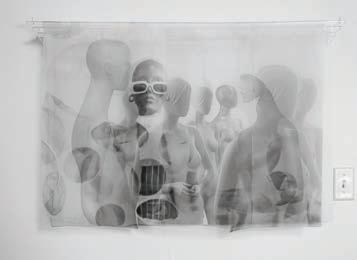
Left: Doors Opened, Archival pigment print, 16 x 20 in., 2024, $350; Top right: Standing Strong, pigment print on three silk panels, 25 x 17 x 5 in., 2024, $550; Bottom right: Faces in the Crowd, pigment print on three silk panels, 25 x 17 x 5 in., 2024, $550
Kristine Hinrichs is a Milwaukee-based photographer whose work focuses on the urban environment. Her work often makes use of reflections and shadows to highlight how elements of the urban environment affect and are affected by each other – much like a funhouse mirror, one element reverberating off of the other. She believes that these elements do not exist by themselves, but only in context. Many of her images are produced before dawn when the city streets are quiet and at the Milwaukee lakefront or in commercial districts. She has a long-term project to document essential workers moving within the city “Essential, Invisible” – generally before dawn while most people are still sleeping. She has also recently begun to print her images printed on silk –three silk panels hung in series providing a three-dimensional effect, hand quilted, and two images woven together.
Hinrichs shoots every day and has not missed a day in thirteen years. That provides for a level of continuity and allows her to notice and document subtle changes in the people and urban landscape. She believes that the images find her. Hinrichs’s award-winning work has been exhibited nationally and throughout Wisconsin and the Midwest.

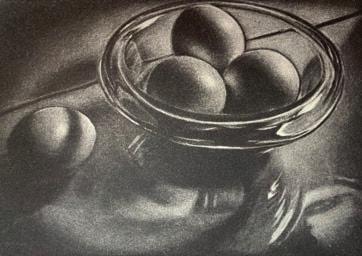

Left: Caption: Nest II, Mezzotint, 12 x 12 in. $450 (unframed).Top right:: Left Out, Mezzotint, 4 x 6 in. $150 (unframed). Bottom right:: Phlox, Mezzotint, 5 x 7 in. (2 plates). $250 (unframed).
Jayne Reid Jackson is an artist/printmaker whose interest in tone and value has led her to mezzotint, a technique being rediscovered for its subtle tones and nontoxic process. Being entirely self-taught in mezzotint, her work is known worldwide and has been invited into numerous national and international print exhibitions and collections as well as juried shows. Her work has been included in international mezzotint festivals in Russia, India and China and her mezzotints have been exhibited in exhibitions in Mexico, Canada, Russia, India, China, Japan, Australia and throughout Europe and the US. As a member of several print societies, she exhibits regularly in their exhibitions. Her work is included in several large public collections both in the US and Internationally.
Jayne's mezzotints use glass and simple objects to create mystery and visual poetry. By manipulating the patterns of the shadows and reflections, she creates small stories, adds symbolic meanings and implies a larger story about these everyday things. The depths of the darks imply that more is hidden than is revealed and adds the element of imagination to let the viewer take over.
jreidjackson@yahoo.com

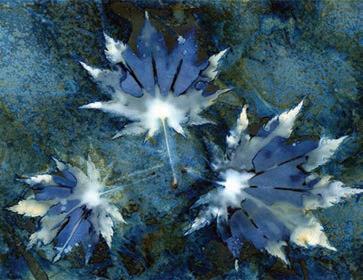
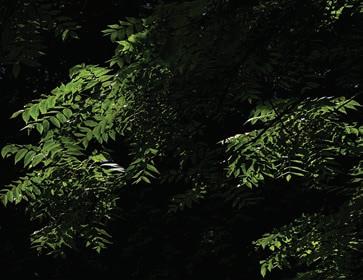
Angela Johnson is an artist, creativity coach and educator based in Madison, Wisconsin. She earned a master’s in art education, an MA in Art, and an MFA with a focus in photography from the University of WisconsinMadison.
Her photo-based work explores themes of place, specifically nature and how we interact with it, ideas of balance, and telling stories through individual and collective memories. As part of her daily practice she walks/ hikes with her camera and a focus on being present, marking and noticing small interactions or occurrences that may otherwise be missed or unnoticed.

Helen Klebesadel is an artist, an educator, and an activist who maintains her art studio in Madison, Wisconsin. Born and raised in rural Wisconsin, she is best known for her environmental and women centered watercolors. Helen’s watercolors push the traditional boundaries of the medium in scale, content, and technique. Ranging in size from the intimate to the monumental, her paintings are transparent watercolors on paper, board, and canvas. She starts with detailed drawings, developing her images with layer upon layer of color washes and dry brush technique mixed with areas of wet-intowet spontaneity. Her painting, Prairie Bluestem and Powershreks is part of her newest Pollinator Effect series focusing on healthy ecosystems, endangered native plants and the pollinators, and the many creatures that depend upon them, like humans. Klebesadel sees her art as part of larger efforts to encourage the adoption of sustainable practices for the good of us all, understanding that what we do to the earth we do to ourselves. helen@klebesadel.com | klebesadel.com | @hklebesadel

Above Us Only Sky, 2021, Encaustic, glass, glitter, fabric on wood panel, 12 x 28 x 3 in. $1200.
Ginny’s work is marked by materiality and physicality, and is conceptually steeped in memory, personal history, and an abiding sense of reverence for the natural world.
Inclusions of eggshells, fronds, and charred fragments serve as metaphors for birth, growth, and decay. Personal signifiers of fabric, millinery supplies, and sawdust highlight the ancestral tradesman of her family. Other materials are chosen for their transformational allowance toward weathering, withering, melting, and burning. Beeswax and resin link all as the medium of connectivity.
The alchemy of these materials takes place with fire, which is fugitive and mesmerizing. The process of creating with fire chances the unpredictable and often inconceivable.
In essence, each work goes through fire to a rebirth, offering up a layered experience of complexity and richness, grit, and sublimity.
ginnykrueger7@gmail.com | ginnykrueger.com | @ginny.krueger

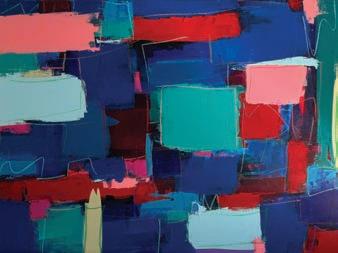
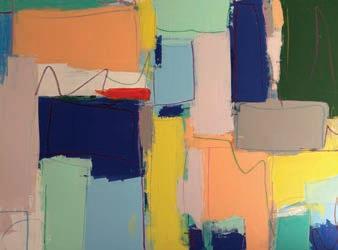
Left: Ascension, 2024, acrylic, oil pastel, 23K gold leaf, and gloss varnish on canvas, 24 x 18 x 2 in. $700 (framed); Top Right: Bloom, 2024, acrylic, latex, and oil pastel on canvas, 30 x 40 x 1.5 in. $1,300.; bottom right: Awakening, 2024, acrylic and oil pastel on canvas, 30 x 40 x 1.5 in. $1,300.
My abstract paintings, unveiling an array of pigments on canvas, embody my sanctuary—a realm of meditative experiences that heal present and ancestral wounds, celebrate the vibrancy of my Mexican heritage, and honor matrilineal resilience.
My artistic approach is raw and intuitive, guided by emotions and the textures of the materials I utilize. I primarily work with acrylics and oil pastels on canvas to create vibrant and emotive compositions where color, shapes, and lines convey visual unity. Utilizing free-form techniques of layering and moving pigments with silicone wedges and bare hands allows me to surrender to the canvas and its colors. It is a spiritual process in which my mind quiets, allowing my soul to speak through textures, colors, and lines. Applying oil pastels fosters a sense of play in my practice, as spontaneous markings emerge from a meditative state.
I invite viewers into my colorful contemplative space, where each painting becomes a sanctuary for healing and transformation. My paintings create meaningful connections with the viewers by inspiring introspection about their own emotions and life journeys through intuitive abstraction. My creative palette is fueled by Mother Earth's colors, bodies of water, music, travels, and my daughter/muse—Inez Lily.
issismac@gmail.com | issismacias.com | @issis.unstrung
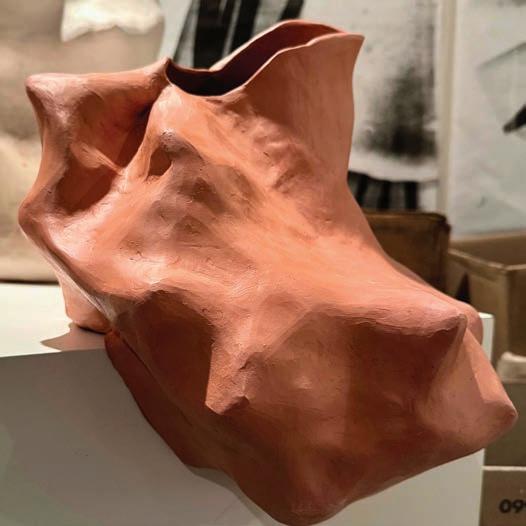
To Relax, 2024, ceramic, 11 x 10 x 8 in. NFS.
My art explores how clothing shapes and organizes the female body, recognizing that this organization is inherently political. Women’s bodies remain central to social and political discourse, and through my work in clay, resin, painting, photography, and video, I examine how the material qualities of women’s clothing and fashion language shape both personal and political experiences. Fiber is my partner in this exploration: sometimes I work in harmony with its properties; other times, I stretch, knot, sew, or pull it into new forms. I believe fiber retains its history, even as it is transformed. Through abstraction, I reveal the subtle histories embedded in everyday materials, evoking a sense of both personal and political memory.
I am a self-taught artist who did not pursue formal art education until my sixties, though I have been sewing since I was young. Decades of making my own clothing — garments for work, play, weddings, and funerals—shaped my understanding of how intimately what we wear is woven into our lives. Before I had studio practice, I had a sewing machine and a bag of notions. Through sewing, I connected with a lineage of women for whom this craft was their primary creative expression. My dedication to fiber as a medium is a feminist homage to that history.
I begin and end with cloth, but my work defamiliarizes this material, transforming the question of "how to dress" into a deeper question of "how to live."

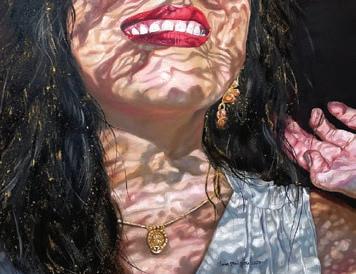

Dwelling in the shadow of the Almighty centers Lauren Marie Nitka’s work. Through Him, her artistic process finds actualization. Working primarily in oil paint, Nitka utilizes a wide palette that explores the spectrum of color in direct light and shadow. The viewer cannot see the veil that casts the shadow, but rather they see its effect. The hand of God operates much like this in our lives. Because oil paint breathes as it dries, Nitka finds it most suitable to paint people, who each have their own breath of life.
Nitka has begun documenting the testimonies of Christians of various backgrounds through portrait painting and videography. These are stories of people who have encountered Jesus and no longer conform to the patterns of this world. Each testimony has been carefully edited to preserve the thoughts and ideas of each participant.
Her hope is to get these portraits in front of viewers who do not know Jesus. Nitka wants viewers to examine spiritual questions they have, to question truths they hold, and ultimately to hear the Good News.
Accepting commissions.

Left to Right: Small but Mighty Heart, 3’s a Magic Number, and Tinker Toys (kinetic). “Too Much and Not Enough: Girl Child of the ‘70s”.
Cyndie Rauls resides in the Driftless Region of Wisconsin and dives deeply into the relationship between what is found and what is lost. She uses materials at hand, often found objects, to create her sculptures. What materializes is an abstract meditation on the beauty and emotional power of these objects. Intended to draw attention to the object's history and its parallels to the artist's journey, this effort preserves a fragment of their intersection in time.
In “Too Much and Not Enough,” Cyndie assembles the objects in repetition, representing the poignant and overwhelming navigation of childhood in the 1970’s. In multiples, the work becomes textural to draw the viewer into the rawness of emotion on several levels. Through texture, form, and the inherent narratives embedded within each object, Cyndie asks the viewer to engage with the memory on a personal level. Her work evokes a spectrum of emotion as complex and multifaceted as childhood itself. Her sculptures, a testament to the enduring power of objects and their ability to hold stories, connect us to the deeply human navigation that is childhood.
cyndierauls@gmail.com

Left: Time of Awakening, acrylic on paper permanently mounted on cradled birch panel, 30 x 22 in., 2024. Courtesy Kim Storage Gallery.; top right: Quickening (detail), acrylic on canvas wrapped cradled panel, 36 x 46 in., 2024; bottom right: Water Shields & Damselflies, solo exhibition at Center for Visual Arts Wausau, 2023.
Katherine Steichen Rosing investigates intricate ecological relationships between forests, watersheds, and climate through painting, mixed media, and immersive sculptural installations.
With a poetic consciousness of the interconnectedness of all things, her richly-hued paintings express the heightened awareness often felt in natural environments. Painting abstractly, Rosing envisions hidden connections within ecosystems. Lines and inscriptions drawn into wet paint suggest root systems, other invisible processes, and aquatic life. Layers of paint sometimes obscure these marks, embedding hidden messages in a rich surface. Rhythmic vertical bands reference forests while ovals of varying ratios allude to leaves, fish, and natural energies. Her paintings range in scale from quietly intimate to engulfing.
Forests are Rosing’s lens to climate, invasive species, and ecological cycles— themes explored in her large-scale installations. Physically immersive, her soaring suspended sculptures become virtual forests, offering contemplative spaces to consider climate-related processes like deforestation, photosynthesis, and the carbon and water cycles. The sculptures are made from various lightweight fibers and paper, sometimes hand-sewn, beaded and embroidered, or painted with ink and burned.
krosing@studioksr.com | studioksr.com | @KatherineRosing
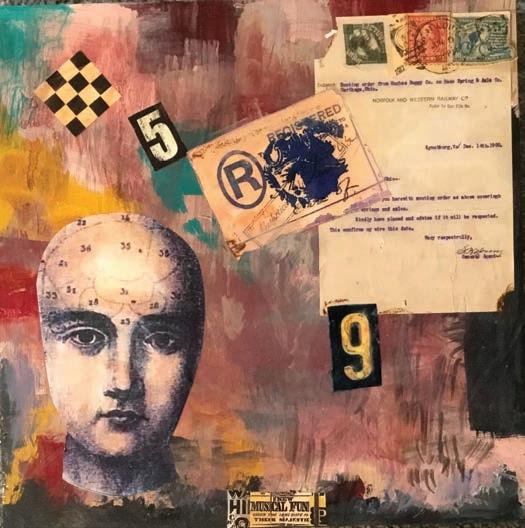
Remember, 2024, mixed media collage, 10 x 10 in. $350.
Judy Tolley is a self-taught visual artist based in Milwaukee, Wisconsin. She has always been passionate about art, often experimenting with many mediums. She eventually discovered the technique of creating collage and, most recently, acrylic abstract painting. She explores various layers of textures and shapes to achieve a desired aesthetic. Judy draws inspiration from found images and her imagination. Her creative process is ever-changing and she leaves her work open to interpretation.
judytolley@yahoo.com | @judytolley3336
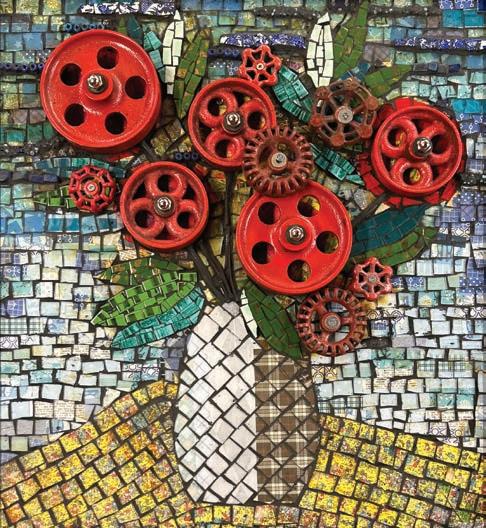
Amy Weh is a mosaic artist with over 30 years of creative experience. Initially working with watercolors, her passion for texture and depth led her to explore mosaics, using traditional materials like china, stained glass, and smalti. Over time, she incorporated found objects, metals, and reclaimed materials to create intricate, one-of-a-kind pieces that reflect her commitment to sustainability.
She studied at Cardinal Stritch College and earned her BFA with a studio emphasis. In addition to her art, Amy is an elementary art teacher and has organized numerous Artist-in-Residence programs with schools, inspiring young minds through hands-on mosaic projects.
During the COVID pandemic, Amy expanded her practice by experimenting with new materials and working on a larger scale, which led to bold, dynamic works that capture her unique style. Amy’s mosaics are deeply personal, breathing new life into discarded objects. Her work has been featured in solo and group exhibitions, including Art Fair Off the Square, St. James Court Art Fair, and Third Ward Art Show.
Amy's art showcases the transformative power of repurposed materials and mixed media, emphasizing creativity, sustainability, and the beauty of upcycled objects.
mosaicweh@charter.net | mosaicweh.com | @mosaicweh
Rachel Hausmann Schall


Nestled within a residential area in Appleton, Wisconsin, Photo Opp is a gallery and community space focused on photography. It functions as a collaborative workspace that provides opportunities for residents of the Fox Cities to learn about photography, darkroom processing, printing, lighting, and more. Co-founders John Adams, Graham Washatka, and Mark Ferrell share a collective vision to educate audiences and create opportunities for career development by connecting individuals through the lens of a camera.
Photo Opp co-founders injected new life into a synagogue built in 1922 by renovating the large space – taking out drop ceilings, refinishing wood floors, installing electrical, and updating the building’s duct work. While the contemporary facelift of the building created a distinctive and contemporary gallery setting on the main floor, the founders were sure to keep some of the structure’s old charm. The outdoor facade still resembles an entrance to a church, but the contemporary signage with high contrast minimal lines indicate the new artistic energy brimming within. Certain areas inside celebrate the building’s history, complete with worn out brick or concrete and a raw, unfinished feeling. The once altar space acts as a focal point in the gallery, calling attention to the now high ceilings, which are accentuated by brightly painted pastel pink arches. This design complements the gallery’s sleek, modernized look. Church pews line the gallery walls, creating a truly unique place for people to experience art.
The space operates as a non-profit, and has a healthy roster of volunteers who assist with gallery sitting, workshops, and events. From Our Streets was Photo Opp’s first exhibition – it featured Wisconsin-based photographers and was part of their grand opening
celebration in fall 2024. In addition to hosting exhibitions and events upstairs, Photo Opp’s lower level is equipped with an art library, a darkroom, six enlarging bays, various backdrops, and plenty of equipment, supplies, and space for community members to gather, listen, and learn about photography and the importance of visual arts.
After the only film lab in the Fox Valley area closed, John Adams and other Photo Opp co-founders saw the need for photography and film resources in Appleton and the region. By making photography accessible to all individuals through educational and outreach opportunities, Photo Opp manages partnerships with local community organizations like the Boys and Girls Club and visits local classrooms to offer expertise about photo and video processes.They also offer workshops and classes that teach audiences how to shoot, develop, and print 35mm film photographs. Photo Opp provides after school learning opportunities for students, and facilitates a mentorship program between professional photographers and students. Photo walks and community film development nights have been popular with audiences as well. Participants are invited to bring film rolls that need to be developed and learn the process of loading reels and prepping film with chemicals.
Co-founder John Adams says, “We are building a community that’s inclusive and we want to be a resource for people by giving them the opportunity to learn with a camera.”
Visit thephotoopp.org to learn more and connect on Instagram at @the.photo_opp.
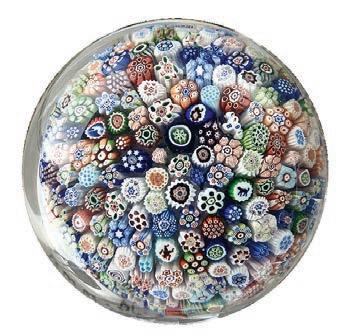
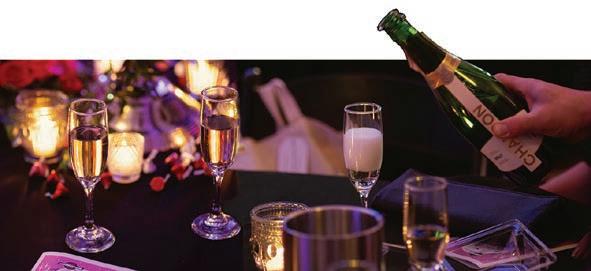
Night at the Museum, February 15, 2025, 7–10PM
Join us for a glamorous celebration of our origin story.
In the 1930s, Bergstrom-Mahler Museum of Glass founder
Evangeline Bergstrom purchased her rst paperweight: a Baccarat Mille ori paperweight from 1842. This Baccarat paperweight became the spark for the origins of our Museum.
Presented by Miron Construction
Hosted at Bergstrom-Mahler Museum of Glass

